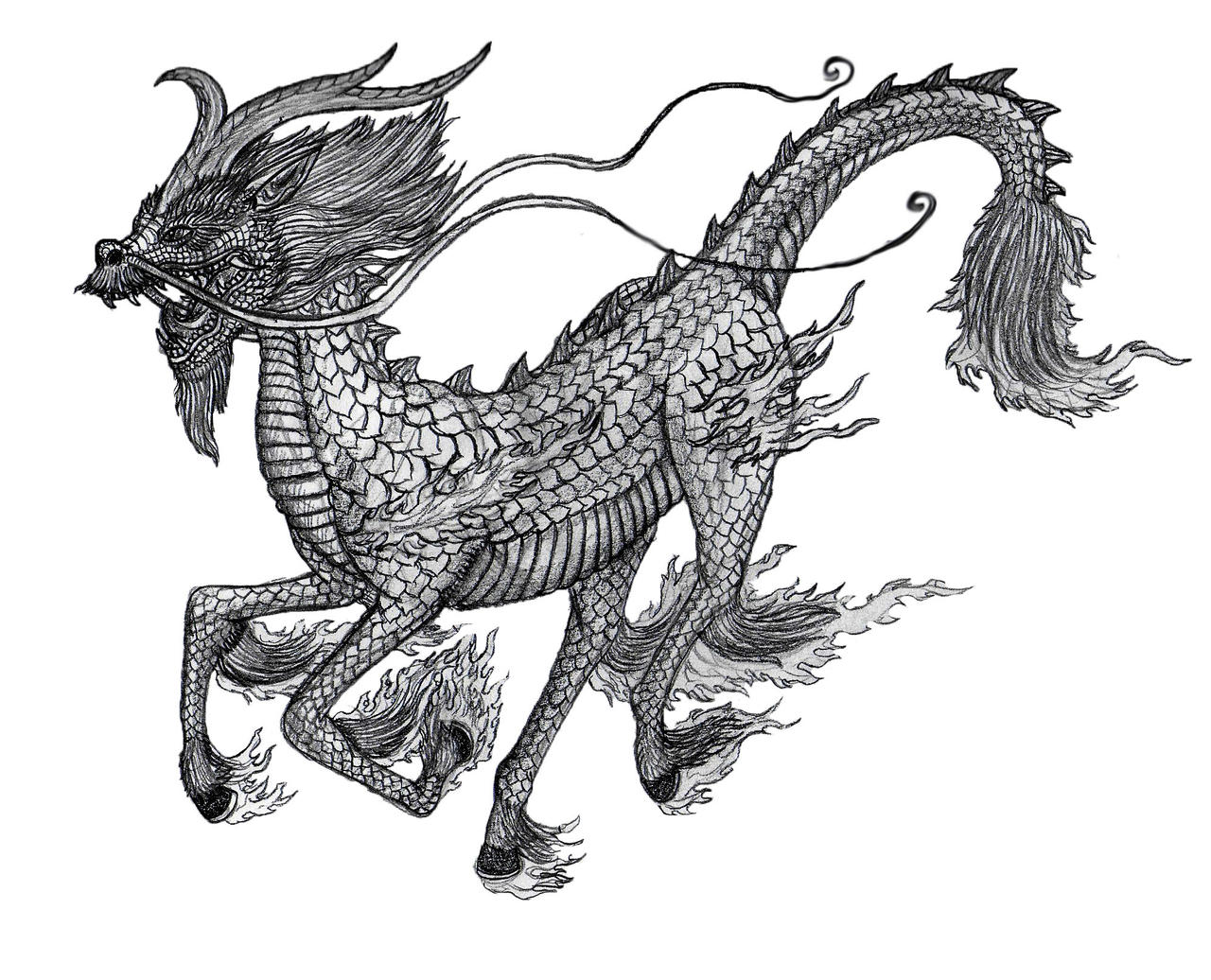Have you ever wondered about the true identity behind the "Kirin" name, especially when it comes to those powerful mobile processors? It's a name that pops up a lot in tech discussions, and it holds a pretty significant spot in the story of mobile technology. People often link it to a mythical creature, a symbol of good fortune, but for many, the actual origin and evolution of the "Kirin" brand in the world of silicon chips remain a bit of a mystery, too it's almost.
For a while, there was some confusion, with folks thinking "Kirin" only had to do with the later, more advanced processors. But the real story stretches back further than you might guess. It's a tale of long-term vision and persistent effort, shaping a line of mobile computing brains that have certainly made their mark. This isn't just about a name; it's about what that name represents in terms of technological progress and ambition, you know.
This article aims to clear things up, pulling back the curtain on the actual beginnings of the Kirin processor line. We'll explore its early steps, look at how it got its name, and trace its path through various significant developments. By the end, you'll have a much clearer picture of what "Kirin" truly means in the context of mobile technology, and perhaps, a deeper appreciation for the journey it has taken, in a way.
- Katharine Mcphee Partner
- Trevor Lefkowitz Actor
- Louise Vongerichten
- Pathivara Best Time To Visit
- Ryan Evans Counting Cars Wikipedia
Table of Contents
- What's the Real Story Behind the Kirin Name?
- A Look Back - How Did Kirin Camp Get Started?
- The Early Days of Kirin Camp Processors
- What Makes Kirin Processors Stand Out?
- Kirin Camp's Performance Milestones
- Is Kirin Camp's Architecture Truly Unique?
- The Impact of Kirin Camp on the Mobile Scene
What's the Real Story Behind the Kirin Name?
When people hear "Kirin," they might think of the mythical creature, a wonderful beast from East Asian lore. This creature is often associated with good things, like prosperity and a calm, peaceful existence. It's a very striking image, and it lends a certain kind of prestige to the name. But how did this name come to be attached to a series of mobile processors, and what's the actual word choice behind it? Some might wonder why it's "Kirin" with a 'K' and not "Kylin," which is another common way to spell the creature's name in English, so.
The naming choice, "Kirin," appears to have a connection that spans both English and Japanese linguistic systems. It's not just one or the other. It seems the word can carry both English and Japanese characteristics at the same time, or just English ones. It is not something that only exists within the Japanese language system. This dual aspect is interesting, suggesting a broad appeal or a particular phonetic preference for the brand. It gives the name a subtle depth, connecting it to different cultural interpretations of the creature, which is that quite interesting, actually.
This choice for the Kirin camp real name reflects a broader strategy. It aims for a sound that is recognizable and carries a certain weight, irrespective of the specific language. The mythical creature itself represents something strong and auspicious, qualities that a company would certainly want associated with its advanced technological creations. It's a way of saying, "This product is powerful, it's special, and it brings good things," which is pretty smart, you know.
A Look Back - How Did Kirin Camp Get Started?
Many people mistakenly think the Kirin processor story only begins with the more recent, high-profile chips. However, the true origins of this processor family go back much further than most realize. It wasn't a sudden appearance but the result of years of preparation and effort. The journey began well over a decade ago, long before the first chip bearing the "Kirin" designation even saw the light of day. It's a testament to a long-term vision, really.
The actual groundwork for what would become the Kirin camp real name processors started way back in 2003. At that time, a major technology company took on a big national project, known as the 863 project. This initiative involved starting to put together a product line for WCDMA mobile phone chipsets. This early work was a foundational step, laying the essential groundwork for future developments in mobile processing technology. It was a time when the seeds for future innovations were being carefully planted, nearly two decades ago.
It's interesting to note that the very first processor to truly carry the Kirin name, the Kirin 620, came out in 2014. So, there was a gap of over ten years between the initial setup of the product line and the release of the first official Kirin chip. This shows how much time and dedication went into developing these capabilities. The Kirin 620, when it finally arrived, was a significant piece of technology for its time, marking a real milestone in the company's journey in the world of mobile silicon, you know.
The Early Days of Kirin Camp Processors
The Kirin 620, which arrived in 2014, was a considerable achievement for its era. It featured an 8-core A53 structure, which was quite advanced for mobile devices at the time. This particular structure allowed for efficient handling of various tasks, making phones run smoother. It also supported the ARMv8 instruction set, which was important because it allowed for 64-bit systems. This was a big step forward, as it enabled phones to use more memory and run more complex applications, basically.
Beyond its core processing capabilities, the Kirin 620 also supported five different communication modes and a full range of frequencies. This meant phones using this chip could connect to various networks around the world, offering wide compatibility. It was also designed with a very good 4G network connection rate, which was a key selling point as 4G was becoming more widespread. Furthermore, it had smart power management features, helping phones save battery life, which is that always a welcome thing for users, isn't it?
These initial steps, especially with the Kirin 620, were crucial for establishing the Kirin camp real name in the mobile processor market. They showed that the company was serious about creating its own silicon and could produce chips that were competitive. This early success set the stage for more advanced processors to come, building a foundation of experience and technical know-how. It was a period of learning and growth, laying down the building blocks for what would follow, you know, in some respects.
What Makes Kirin Processors Stand Out?
Over the years, the Kirin processor series has introduced several chips that really stood out for different reasons. Each new generation brought something fresh to the table, showing a steady progression in mobile technology. From chips that focused on efficient everyday use to those pushing the limits of speed and intelligence, the Kirin family has certainly evolved. They've consistently aimed to offer something distinctive in a very crowded market, you know, which is a pretty big deal.
One notable chip was the Kirin 810. This processor gained recognition for its excellent balance of performance and energy efficiency. It was considered a very strong contender in the mid-range phone market, offering a lot of punch without draining the battery too quickly. This made it a popular choice for phones that needed to be capable for daily tasks but also last a good long while on a single charge. It showed that Kirin could deliver quality across different price points, not just at the very top, pretty much.
Then came chips like the Kirin 990 5G, which brought significant upgrades. This chip moved to a more advanced manufacturing process, using 7nm EUV technology. This meant the components on the chip could be packed even tighter, leading to better performance and efficiency. The graphics processing unit, or GPU, got a big boost, moving from 10 cores to 16 cores, which meant smoother visuals and better gaming experiences. While the main processor structure stayed similar, its speed was increased, and the neural processing unit, or NPU, which handles artificial intelligence tasks, got a substantial upgrade. This chip also integrated 4G connectivity directly, which was a convenient feature, too it's almost.
Kirin Camp's Performance Milestones
The Kirin 9000 and Kirin 9000E chips represented another important step forward. These chips shared many similarities, both using the Mali G78 graphics processor. The main difference was in the number of cores for the graphics part, with the Kirin 9000 having 24 cores and the Kirin 9000E having a slightly different configuration. These chips were designed to offer top-tier performance for demanding applications and graphics-intensive games. They were, in a way, the culmination of many years of development, aiming for the very best in mobile processing, that.
More recently, the appearance of the Kirin 9000S chip was seen as a significant moment. It signaled that the country had achieved something truly remarkable: the ability to research, design, and produce its own mobile System-on-Chip (SOC) components. This was viewed as another breakthrough in semiconductor technology, showing a greater degree of self-reliance. People were very curious about how well this chip would perform, and various testing groups and professional benchmark scores were used to evaluate its capabilities. It was a clear statement of intent and a display of considerable technical skill, you know, in some respects.
The development of these chips, from the initial Kirin camp real name efforts to the latest releases, illustrates a consistent drive for progress. Each chip iteration built upon the last, adding more processing power, better graphics, and smarter AI capabilities. They represent a long-term commitment to pushing the boundaries of what's possible in mobile computing, and also, to establishing a strong position in the global technology landscape, basically.
Is Kirin Camp's Architecture Truly Unique?
When we talk about processor architecture, it gets a bit technical, but it's really about how a chip understands and carries out instructions from software. Think of it like the basic rules or the "language" a computer chip speaks. In the world of semiconductor manufacturing, this set of rules is called an instruction set architecture, or ISA. It's what tells the processor how to do its job. There are main ISAs that most processors use, and then there are specific ways companies adapt them, you know.
The Kirin 9020 architecture, for example, brought up some interesting discussions about its underlying instruction set. There was talk about how it related to the widely used ARM instruction set, and also a mention of something called "Lingxi instruction set." This situation was described using an analogy to "Rashomon," a Japanese film where different characters give conflicting accounts of the same event. It suggested that the relationship between these instruction sets, and how they contribute to the Kirin camp real name processors, might not be as straightforward as it seems from the outside, which is that pretty intriguing.
The core idea here is that a processor's ability to understand and execute software commands is absolutely fundamental to its operation. Whether it's based directly on a common instruction set or incorporates unique elements, the way these digital "language rules" are put together determines a chip's capabilities. For the Kirin processors, exploring these architectural choices reveals a lot about their design philosophy and their efforts to create distinct and capable mobile computing brains, very, very.
The Impact of Kirin Camp on the Mobile Scene
The development and widespread use of Kirin processors have had a considerable influence on the mobile phone market. The arrival of chips like the Kirin 9000S, for instance, was seen as a very big deal because it showed that a country could develop, design, and manufacture its own mobile system-on-chip components. This was celebrated as a significant step forward in semiconductor technology, suggesting a growing independence in a critical industry. It wasn't just about a new chip; it was about what that chip represented for national technological capabilities, you know, basically.
However, the journey for the Kirin camp real name hasn't been without its difficulties. There have been instances where the availability of phones featuring certain Kirin chips was quite limited. For example, some older models with the Kirin 970 were not widely available, or were mostly older models. This situation, along with efforts to control the use of third-party operating systems on phones, created some limitations for users and developers who might have wanted more flexibility. It showed that even with strong chip development, other factors can influence market presence and user choice, which is that something to consider, anyway.
The story of Kirin processors is a complex one, involving not just technical achievements but also broader strategic implications. From the early days of setting up chip lines to the creation of advanced, self-sufficient components, the Kirin series has been a key player in the mobile technology landscape. It reflects a persistent drive to innovate and compete at the highest levels, even when facing various challenges. It's a tale of continuous effort and significant progress in the intricate world of mobile silicon, you know, really.
This exploration into the "Kirin camp real name" reveals that it's not about a person, but rather the deep history and technical evolution of a line of mobile processors. We've covered its early beginnings in 2003, the first official Kirin 620 chip in 2014, and the progression through powerful chips like the Kirin 990 and 9000S. We also touched upon the naming origins and the architectural discussions around these chips, understanding their significance in the broader mobile technology picture.
Related Resources:



Detail Author:
- Name : Isabel Rogahn II
- Username : conroy.keith
- Email : lacy.daniel@heaney.net
- Birthdate : 1989-08-13
- Address : 1975 Jamir Rapids Apt. 731 Port Danika, IL 88224
- Phone : +1 (341) 942-2597
- Company : Terry-Conn
- Job : Education Teacher
- Bio : Est iusto non quas nulla cum aut totam. Possimus est ullam rerum quasi ab. Expedita eum id dolores omnis dolor modi.
Socials
twitter:
- url : https://twitter.com/deelarkin
- username : deelarkin
- bio : Esse veniam qui eum sit rerum doloremque quaerat. Eligendi laboriosam officiis rerum iusto id vel. Culpa et praesentium facere non.
- followers : 795
- following : 2506
linkedin:
- url : https://linkedin.com/in/larkin2012
- username : larkin2012
- bio : Eum nam distinctio omnis animi iure esse cum.
- followers : 3825
- following : 729
tiktok:
- url : https://tiktok.com/@larkind
- username : larkind
- bio : Beatae harum vel et nam est. Quo et natus eaque deserunt molestiae quas.
- followers : 3984
- following : 571
instagram:
- url : https://instagram.com/dee_larkin
- username : dee_larkin
- bio : Dolor repellat tenetur voluptas saepe. Saepe autem iusto minus. Repellat ut et eveniet sed dicta.
- followers : 5211
- following : 580